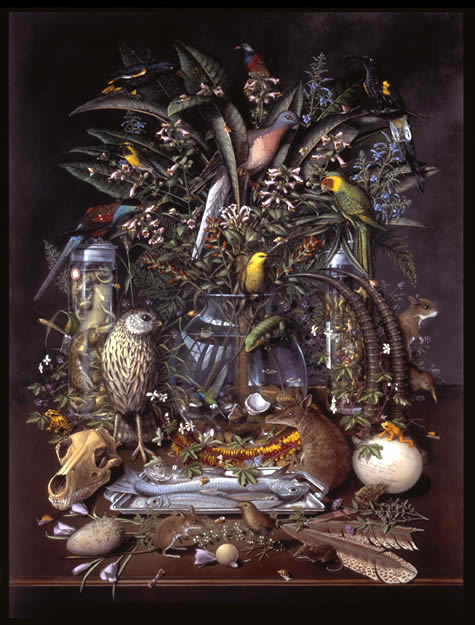The Department of Zoology of the University of Otago held a conversazione mark the end of the year at the Hutton Theatre in the Dunedin Museum. Four topics for discussion were introduced: Natural neighbourhoods for city children; Sea lion bycatch in New Zealand Sub-Antarctic Squid Fishery; Water worries: hot, rich, dirty and dry; and Species restoration using reintroduction and de-extinction.
Natural neighbourhoods for City Children
Urban areas are diverse, ranging from nature rich and creating environmental awareness to nature poor. Children tend to have a high level of access to green-space with biodiversity. Of course, children are allowed a restricted freedom of movement. The study looked at kids from Auckland, Wellington and Dunedin. Gardens encourage a connection with nature and children spend 40% of their time in them, along with sports grounds. Children avoid woodlands, such as green-belts, and streets, spending about 10% of time in those areas. The social and economic status of households also affects the access to biodiversity. Density reduces biodiversity.
Sea Lion Bycatch in New Zealand Sub-Antarctic Squid Fishery
Squid fishing occurs around the Auckland Islands. Sea Lion population has recovered to the point that a colony re-established itself on the Otago Peninsula since 1993. Between 1992 and 2009 it is estimated there have been 1322 deaths, especially females. The death of each sea lion female means the pup she was raising at the time would starve to death, and no replacement pup would be born. Escape devices to allow sea lions to escape from drowning in drag nets have been introduced. The government and the fishing industry have declared the issue resolved. More evidence is needed to establish this as true. We only have to kill a few adult sea lions to wipe out a population.
Water Worries: Hot, Rich, Dirty and Dry
Farmlands have gone from tussock to sheep and beef, and now to big dairy. Important to keep sediments out of streams. The amount of water removed from the lower river for irrigation means only 10% of the trout in that part of the river survived. Predators such as ferrets and feral cats eat well. The proposed minimum flow for streams is 450 litres per second. A more realistic amount required for connection in streams is estimated to be 750 litres per second. There is a balance between between economics and environment that needs to be discovered.
Species Restoration using Reintroduction and De-extinction
New Zealand is an extinction hot spot. Recovery is not impossible. 264 Pateke (Brown Teal) were released into the Coromandel Peninsula have grown to a population of 800 birds. Pockets of birds are focused within an area.
The last thylacine froze to death in a zoo. Much of this talk was covered in the inaugural professorial address Reintroduction Biology.
After a brief break for refreshment the audience broke up into discussion groups. I was tempted to stay and hear more, especially about urban biodiversity. I left during the break and headed home for tea.




